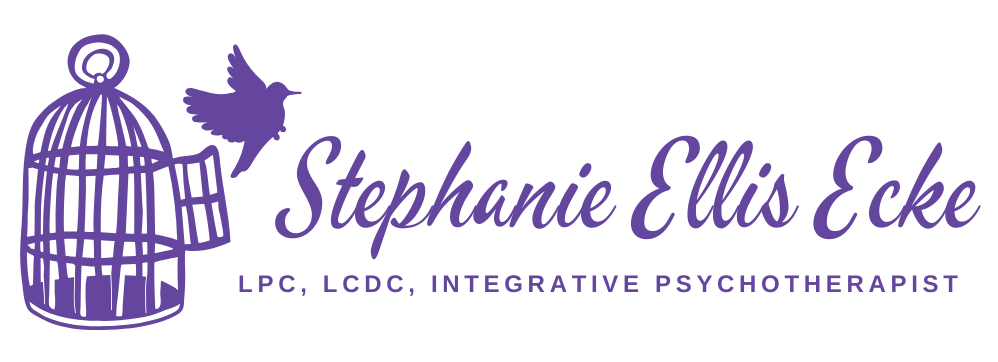ESSENTIAL OILS BY YOUNG LIVING
What is an essential oil?
Essential oils are aromatic, volatile liquids that are pressed from the bark, stems, leaves, rinds, flowers and seeds of plants. Essential oils, like our blood, contain thousands of chemical constituents that are used to fight infection, seal wounds, oxygenate and nourish cells, and destroy microbe and pathogen invaders.
Essential oils are very different from vegetable/fatty oils such as corn oil, olive oil and flax seed oil. Most are not greasy and they do not clog pores. Vegetable oils can become rancid over time; essential oils, on the other hand, do not go rancid, and some have been shown to act as powerful antimicrobials. Studies at Weber State University in Utah in 1998 demonstrated that a blend called “Thieves,” patented by Young Living Essential Oils (containing the essential oils of cinnamon, clove, lemon, eucalyptus and rosemary) has a 99.96% kill rate of streptococcus bacteria. Other studies have shown that oregano oil is highly effective against pneumonia.
The most powerful link to the subconscious is through the sense of smell (Dr. D. Gary Young, training, 2001). The comforting aroma of a favourite food can bring back childhood memories or other moments in which the smell was present. Science supports the observation of a vital connection between scents and the emotions. Precise olfactory receptors inside the nose receive sensory stimuli whether or not we are consciously aware of them, and these stimuli trigger electrochemical signals via neurons to the brain’s limbic system and the amygdala, our emotional memory center.
According to Candace Pert (1997), the amygdala acts as the storehouse of traumas and contains the densest concentration of neuropeptides – the neurotransmitters that act in emotional signals. This high concentration of neuropeptides can affect cellular memory: The amygdala receives incoming scent information before the higher brain centers, and activates the autonomic nervous system in response to either pleasant or traumatic memories before any information reaches the decision-making cortex. Clearly smell, not sound, is the primary sense that unconsciously activates and affects traumatic memories stored in the amygdala. Smell can be used to heal traumatic memories stored in the brain center as well.
Essential oils, also called volatile oils are, by their nature, beautiful tools for working with the amygdala. Like any volatile chemical, they readily “flash off” to vapor at normal room temperatures, bringing the oil to a form which is readily taken up by the olfactory receptors.
Although any essential oil can be inhaled into the olfactory channels, only therapeutic-grade essential oils will achieve the desired therapeutic results. Young Living Essential Oils are grown and distilled under stringent conditions. They are the only company in North America whose oils are chemically tested and certified as therapeutic-grade by the French AFNOR group, which sets the standard worldwide for therapeutic-grade oils
So how does this relate to panic attacks? The shifts that individuals and couples have made have consistently been easier and faster. Clients have been able to reach their goals and to maintain the changes in a shorter period of time. Essential oils have been found to be a very important and exciting addition in the treatment of panic attacks.
There are 3 different ways to use the oils: 1st, by inhalation, usually done by putting a drop into the palm, rubbing both hands together until the oil is absorbed, and cupping your hands over your nose, 2nd by applying topically on various points on the body, and 3rd orally which can only be done with therapeutic-grade essential oils because of the safety issues.
Therapeutic-Grade Essential Oils vs. Perfume Grade Oils
There is a huge difference between oils that merely “smell good” and therapeutic-grade essential oils. The quality and purity of Young Living’s essential oils has been thoroughly established by scientists and medical professionals who continue to research and validate the effectiveness of these natural wonders.
Only therapeutic-grade, 100% organic essential oils will achieve the desired results in therapy. If you do not experience the results you seek from an essential oil, this is most likely due to adulterations in the oil, or a synthetically created chemical substitute (which many unscrupulous companies will add into the fine balance of chemical constituents naturally inherent in an essential oil). Warning: Fillers or adulterants, such as pesticides, solvents, and deformed molecules from speedy extraction of an oil can create side effects or negate the inherent benefit of the pure essential oil.
Contact Information:
For any additional information, please contact me at any time:
Stephanie Ecke, LCDC 210-287-4002 sle816@aol.com Or order these oils directly by contacting Young Living Essential Oils at: www.youngliving.com Please refer to my Member #1100912 Or: In Canada and the United States, 1-800-371-2928 In the U.K.and Europe, 44-14-8045 5088 In Australia, 011-617-32-551177 In Japan and area, 011-617-3846 0377| Therapeutic-Grade Oils… | Perfume Grade Oils… |
| …Are pressed from the roots, leaves, stems or flowers of wild-gathered or organically grown plants |
…May be contaminated with pesticides or synthetic fertilizers, or contain additives to increase the volume or fragrance of the oil |
| …Exhibit powerful soothing, healing or cathartic effects on the body and the mind |
…May cause allergic-type reactions, headaches or anxiety |
| …Are distilled in stainless steel using low temperatures and steam inplace of pressure in order to preserve all plant properties and constituents |
…Go through distillation at high pressure and/or high heat in metal distilleries which may react chemically with the oils and damage beneficial constituents |
| …Are distilled using only pure mountain water, keeping the oils free of additives |
…Are distilled with water treated with chlorine, fluorine, or other chemicals |
| …Require a long distillation time to capture the essence of the plant, preserving all medicinal constituents of the oil |
…Are often formed by quick distillation processes which damage the oils and decrease the quality and efficacy of the oil |
| …Are pure oils obtained from correctly identified plant species, offering naturally occurring, therapeutic properties! |
…Are oils modified with synthetic chemical components to attain the desired aroma but which do not possess therapeutic constituents or the qualities of a real essential oil. |
Harmony: Brings emotional and physical healing by balancing energy centres 3 Wise Men: May help to release deep-seated trauma – through pineal stimulation Present Time: Gives a feeling of being in the moment Inner Child: Helps connect to early self, identify and release childhood trauma Release: May help release anger and frustration and stimulate balance Grounding: Helps stabilize and ground us peacefully Forgiveness: May help release negative memories, allowing acceptance and peace Hope: Helps reconnect with one’s strengths, restoring hope for the future and helping to move forward Joy: Produces an uplifting magnetic energy that brings joy to the heart. May inspire romance and help overcome grief and depression SARA: May help release the trauma and memory of sexual, ritual, and/or self-abuse White Angelica: Increases the aura around the body, bringing a sense of strength and protection, as well as help to overcome griefThe Essential 7 Kit:Lavender: Calming, relaxing and balancing. The most versatile of all essential oils Lemon: Promotes clarity of thought, invigorating, helps to relieve depression Peppermint: Purifying, stimulating and uplifting. Enhances concentration Joy: as above PanAway: Physical pain relief for sore muscles and achy joints; helps the body to rebuild after injury Peace & Calming: Creates a feeling of calm and well-being, promotes relaxation and restful sleep, good for excitable children Purification: Cleanses the air and soothing to the skin (insect bites and cuts)Also recommended:Trauma Life: May neutralize difficult past experiences and present traumas and shock Orange or Citrus Fresh (and other citrus): Uplifting, helps with depression Believe: Helps to build self-confidence Brain Power: Promotes deep concentration and focus Cedarwood and Sandalwood: Relieves anxiety, disperses anger; balances pineal gland Clarity: Increases mental alertness Frankincense: Excellent for depression, uplifting, strengthens immune system Idaho Balsam Fir: Also for depression and highly uplifting Highest Potential: Helps to gather possibilities, remove roadblocks, open new vistas Sacred Mountain: Promotes feelings of strength, empowerment, grounding, protection Transformation: Creates a sense that change is possible Vetiver: Good for depression, grounding, calming, stabilizing, helps balance shockDaily Routines to Balance your Energy and Start the Day!“Valor”, one drop over the wrist and hold the wrists together for a minute, or on the bottom of the feet”Harmony”, one drop over the thymus or solar plexus “Joy”, one drop over the heart “White Angelica”, one drop in one hand, rub both hands together and brush your head, face, shoulders, chest, down the legs, right over your clothes as though brushing on an angelic shield Resource List 1. Essential Science Publishing (1-800-336-6308) (compiled by), Essential Oils Desk Reference, Third Edition, 2004. 2. Gallo, Fred (ed), Energy Psychology in Psychotherapy: A Comprehensive Source Book, W.W. Norton and Company, 2002. 3. Mein, Carolyn L., Releasing Emotional Patterns with Essential Oils, 3rd Edition, VisionWare Press, 2000. 4. Pert, Candace B., Molecules of Emotion: The Science behind Mind-Body Medicine, Simon & Schuster, 1997. 5. Schnaubelt, Kurt, Advanced Aromatherapy: The Science of Essential Oil Therapy, Healing Arts Press, 1995. 6. Schnaubelt, Kurt, Medical Aromatherapy: Healing with Essential Oils, Frog, Ltd., 1999. 7. Stewart, David, Healing Oils of the Bible, CARE (Centre for Aromatherapy Research & Education), 2002. 8. Stewart, David, The Chemistry of Essential Oils Made Simple, CARE, 2005. 9. Young, D. Gary, Essential Oils Integrative Medical Guide, Essential Science Publishing, 2003. |

